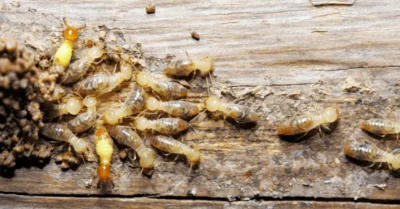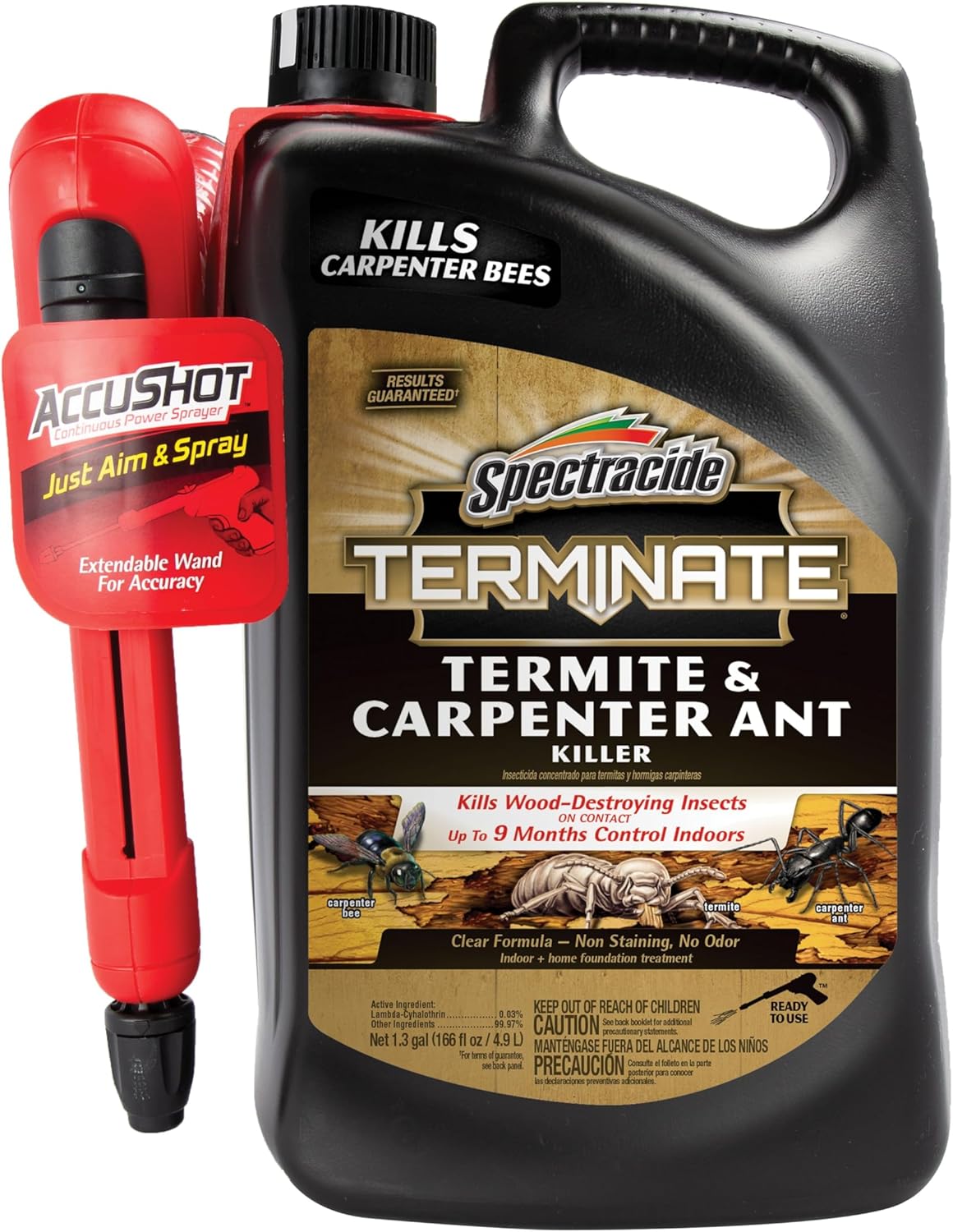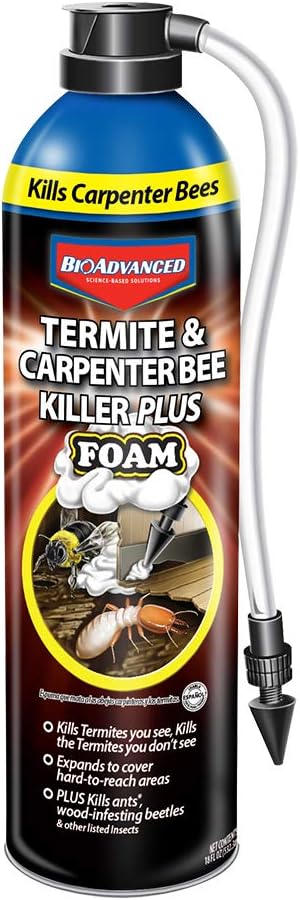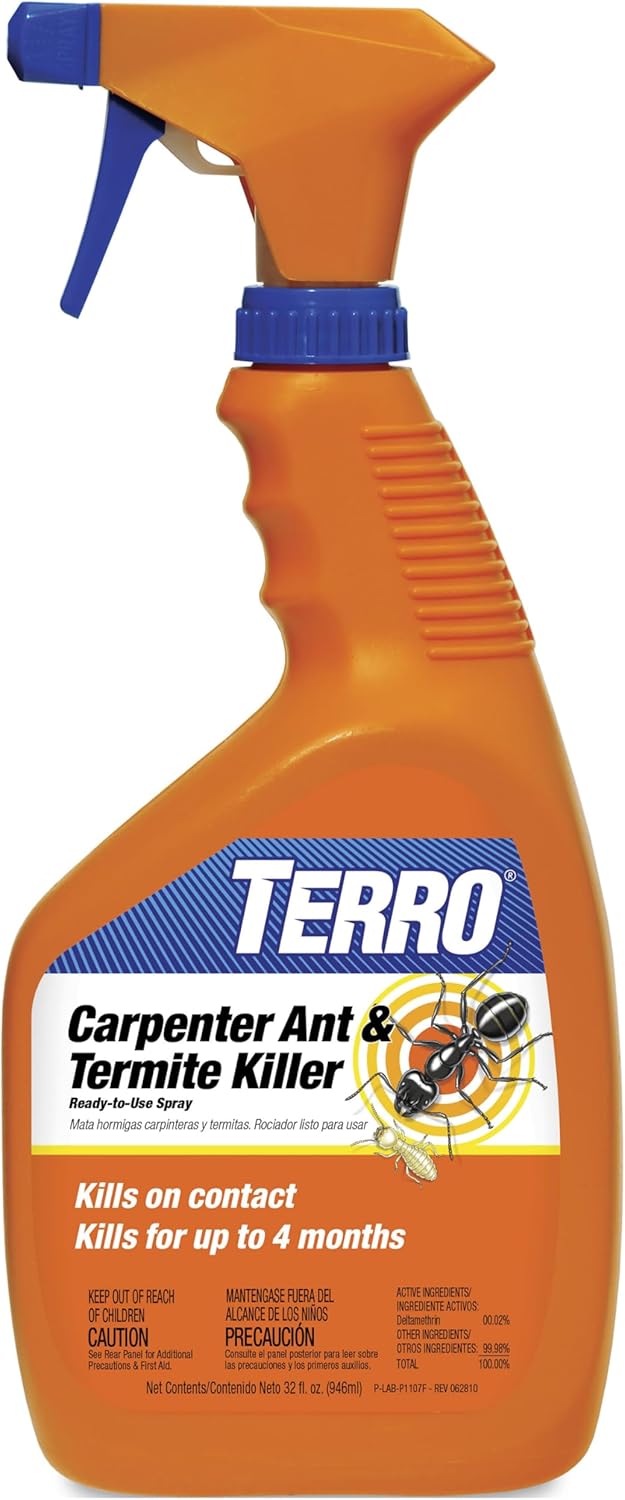Termite Control & Removal
Termites cause billions in property damage annually, often destroying structures before their presence is detected. These wood-destroying insects work silently within walls and foundations, making early detection and professional treatment crucial. Understanding termite behavior, recognizing warning signs, and implementing proper prevention methods are essential for protecting your property from these destructive pests.
Recommended Products
Spectracide Terminate Spray
A powerful indoor and outdoor treatment that eliminates wood-destroying insects like termites, carpenter ants, and carpenter bees. Features a non-staining, odorless formula with AccuShot sprayer for precise application and up to 9 months of indoor protection.
- Extended Protection
- Clear Formula
- Precision Sprayer
- Multi-Pest Control
BioAdvanced Termite & Carpenter Bee Killer Plus
This professional-grade foam insecticide effectively eliminates termites, carpenter bees, and other wood-destroying insects. The innovative expanding foam formula reaches deep into wood and crevices for comprehensive pest control.
- Maximum Coverage Formula
- Professional-Grade Application
- Dual Action Protection
TERRO Carpenter Ant & Termite Killer
A versatile ready-to-use spray that provides instant and residual control of wood-destroying insects for up to 4 months. This 32 oz formula is designed for targeted application in cracks, crevices, and ant trails both indoors and outdoors.
- Contact Killing
- Residual Protection
- Targeted Application
- Versatile Usage
⚠️ Health & Safety Risks
- Structural damage
- Foundation weakening
- Support beam compromise
- Property value loss
- Financial damage
🚨 When to Call a Professional
- Any suspected activity
- Annual inspections
- Property purchase
- Visible damage
- Swarmer presence
🏥 Emergency Response
- Structural concerns: Contact engineer
- Active infestation: Schedule inspection
- Support damage: Evacuate if severe
- Insurance claims: Document damage
- Property sale: Disclose issues
🔍 Identification & Signs

Carpenter Ants vs Termites: How to Tell the Difference
Correctly identifying whether you have carpenter ants vs termites is crucial for homeowners facing wood-damaging pest infestations. While both insects…
Read More →🏡 DIY Removal Guides

How to Get Rid of Termites: Complete DIY & Professional Treatment Guide 2025
Termites are among the most destructive pests that can invade your home, capable of causing thousands of dollars in structural…
Read More →🔍 Signs of Infestation
- Mud tubes
- Hollow wood
- Swarmers/wings
- Frass (droppings)
- Bubbling paint
🏠 Common Entry Points
- Foundation cracks
- Wood-ground contact
- Mulch areas
- Utility entries
- Expansion joints
Frequently Asked Questions
What attracts silverfish?
High humidity, starchy materials (paper, books, wallpaper), and dark, undisturbed areas attract silverfish. They thrive in environments with 75-95% humidity.
Are silverfish harmful?
While not directly harmful to humans, silverfish can damage books, papers, clothing, and wallpaper. They may also contaminate food items they infest.
How do I get rid of silverfish naturally?
Reduce humidity, use dehumidifiers, seal food properly, remove paper clutter, and use natural repellents like cedar or diatomaceous earth.
Where do silverfish come from?
Silverfish enter homes through cracks, gaps around pipes, and with cardboard boxes. They're attracted to moist environments and paper products.
How fast do silverfish multiply?
Female silverfish lay 1-3 eggs per day and up to 100 in their lifetime. Eggs take 3-8 weeks to hatch, with nymphs reaching maturity in 3-4 months.
Will silverfish go away on their own?
No, silverfish populations typically persist unless moisture issues are resolved and active control measures are implemented.
How do I protect books from silverfish?
Store books in dry areas, use dehumidifiers, add silica gel packets, maintain air circulation, and regularly inspect storage areas.
Can silverfish climb walls?
Yes, silverfish can climb vertical surfaces including walls and furniture, making it important to check high storage areas for activity.
Do silverfish come up drains?
While they can enter through drains, silverfish more commonly enter through cracks in foundations, walls, or around utility penetrations.
How long does treatment take?
Silverfish control typically takes 2-6 weeks, but lasting results depend on addressing moisture issues and maintaining preventive measures.


